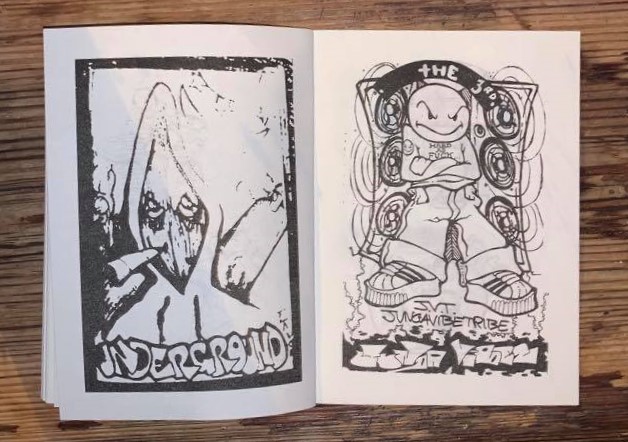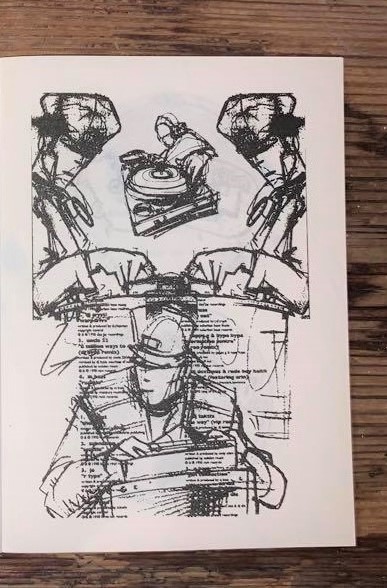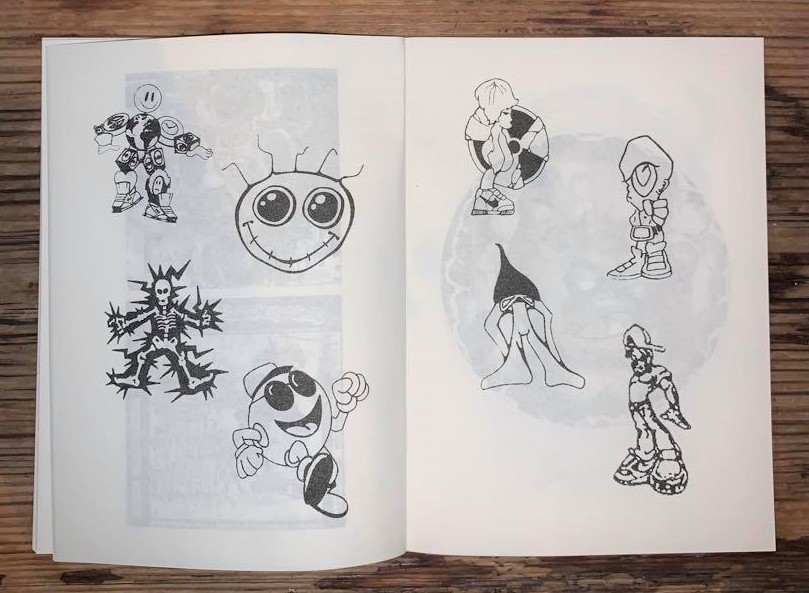During it’s early days, the Jungle mascot became almost as omnipresent as the breakbeats themselves, a symbol of credibility and authenticity of the music’s street value. For the fifth edition of Klasse Wreck KFAX series record, a label focused around showcasing past and contemporary breakbeat, jungle and techno artists, Joe Reilly AKA Resampled , collected both familiar and lesser known figures that appeared on the record’s center label.
The zine , which as an object has historically been a symbol of sub and counter cultures , consists of 70 pages of black and white drawings, caricatures , sketches and vinyl record covers. Flipping through the pages, there is a clear theme of deviancy , coolness, street culture and above all – music. Makes sense, as Jungle was and still is a form of cultural expression for London’s working class urban youth, primarily for people of color. Being conscious of the historical context (i.e. Post-Thatcherite UK) , the early 90’s left a lot of these individuals feeling disenfranchised and uncertain about the societal future. Many were left unemployed, below the poverty line, not able to afford housing.
Those aspects of socio-economic life were represented well not only in the music , but the drawings as seen in the zine as well. The rough , dark style of some of the drawings reflect a tough reality in early 90’s London, a time where class inequalities and injustices were especially evident. The images present an opposition to the system and sense of being “hardcore” , with drugs , weapons and slogans like “hard as fuck” appearing through the zine. The notion of underground also manifests itself , with mascots being individuals underrepresented and seen as ‘other’ in society. Even the zine name “Rudeboys” suggests the quality of being disruptive, viewing society negatively. In conclusion , the drawings resonate with the the bleak and cynical view of society from the perspective of early 90’s Britain’s urban youth.


Yet the visual medium of the zine presents a juxtaposition of the whole 90’s Jungle rave scene. On one side, it is a representation of working class people’s grim reality and reflects different forms of oppression. On the other side, the ‘rave’ , or any of the secret , underground parties were the perfect escape of the harsh reality. They were safe spaces in which urban youth could express themselves creatively and be apart of a community . As Sarah Thornton put it “Clubs allow their patrons to explore cultural forms (like music and clothes) which confer autonomous and distinct identities”. Production of fanzines, posters and music generated a strong subculture for people to participate in. This creative outlet and sense of community is presented well in some of the images in “Rudeboys”, often portraying ecstatic(in relation with the drug use surrounding raves), overly positive, at times even fantasy inspired futuristic drawings. We can assume that the atmosphere of the parties was one of pure happiness, freedom , suggesting a “out of this world” experience. We can see that raves offered a liberating experience for it’s visitors.


Honestly, the fifth edition of Klasse wrecks series record perfectly displays a visual of the early 90’s Jungle rave scene. It accurately reflects the class structure inequalities ,which are present to this day, by presenting individuals belonging to the Jungle rave scene , but also offers a positive and culturally significant notions of community, subculture and creativeness.



